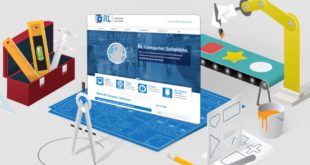Traffic won’t naturally find its way to a brand-new website. There are 1.13 billion websites on the internet as of 2024, but 82% are deactivated. Still, there’s an endless list of websites created before yours. Unless someone knows your brand name or finds your website through a keyword, it’ll be almost impossible to locate unless it’s on the first two pages of Google. After that, consumers begin to question the validity and reliability of the website.
How do you know if your website needs more traffic? More importantly, what can you do about it?
Let’s explore the signs that indicate a need for more traffic and effective strategies to achieve it.
Analyzing Your Current Traffic and Goals

Start by assessing your current visitor statistics. Are your numbers aligning with your set goals? Analyze your traffic sources. Are they diverse or overly reliant on one channel? Understanding where you stand helps set realistic traffic goals and identify areas for improvement. You can use Google Analytics and Ahrefs to get the statistics you need.
This analysis should also extend to the behavior of your visitors. What pages are they spending time on? Are there specific content types or topics that are driving more traffic? There are multiple questions to ask.
Setting clear, measurable goals for your traffic can guide your efforts and help you track progress. Whether it’s increasing overall visitor numbers, boosting engagement on specific pages, or improving conversion rates, having defined objectives provides direction for your traffic-increasing strategies.
Optimizing for Search Engines
Search engine optimization (SEO) is highly effective. Essentially, SEO improves a website’s search engine visibility – increasing visibility means increasing traffic.
Strategies will look at optimizing your site with relevant keywords and quality content (on-page SEO) with a strong link-building strategy (off-page SEO) – but the key is organic traffic from external sources. What that means is that the primary SEO strategy is link building. Content will naturally include a link to your website that’ll drive traffic to you. Keyword strategy and placement determine how successful link building is.
Regularly updating your content, monitoring your site’s performance, and adapting to the latest search engine algorithms are crucial for maintaining and improving your rankings. Most companies outsource SEO to marketing brands with a better understanding of this and start SEO campaigns to drive traffic.
Leveraging Social Media Platforms

Social media is a powerhouse for driving traffic. Use platforms relevant to your audience to share content, engage with users, and direct them back to your website. Consistency and engagement are key. Regularly posting interesting and relevant content can help build a loyal following that’s likely to visit your website.
Tailor your content to suit the unique characteristics of each platform. Short, snappy captions work best on Instagram. Informative articles and industry insights are more suited to LinkedIn. Interacting with your followers is also really important. Reply to comments, messages, and live sessions for more engagement.
Leveraging social media influencers and collaborations can also amplify your reach, attracting their followers to your content and, subsequently, your website. Offering freebies or paid services to influencers is a great way to boost website traffic – TikTok influencers are massive.
Utilizing Digital Assets
Free digital assets are an effective resource. High-quality stock images, graphics, or templates to enhance your website and social media posts – there’s a negative impact on bands who take low-quality pictures. These assets can significantly improve the aesthetic appeal of your content, making it more shareable and attractive to potential visitors.
They’re also cost-effective solutions, adding a professional touch to your content – it’s something low-budget startups do frequently. When selecting these assets, ensure they align with your brand’s identity and message.
Consistency in visual style across your website and social media platforms helps build brand recognition. Beware of using low-quality stock images and animations. The images should be realistic and high-quality unless it’s an infographic.
Creating Quality Content

Quality content is the backbone of any successful website. It’s not just about quantity but offering value that resonates with your audience. This could be through informative blog posts, engaging videos, or helpful guides. Content that addresses the needs and interests of your audience will naturally attract more traffic.
Paid Advertising
While organic growth is ideal, sometimes a boost from paid advertising can be beneficial. Platforms like Google Ads or social media advertising offer targeted options to reach your specific audience. Paid campaigns can be particularly useful for new websites or during promotional periods.
Understanding whether your website needs more traffic is crucial for its growth. By analyzing your current traffic, optimizing for search engines, leveraging social media, utilizing digital assets, creating quality content, and considering paid advertising, you can strategically increase your website’s traffic.
Remember, driving traffic is an ongoing process that requires time, effort, and adaptation to changing trends and audience preferences.
 Comeau Computing Tech Magazine 2024
Comeau Computing Tech Magazine 2024



